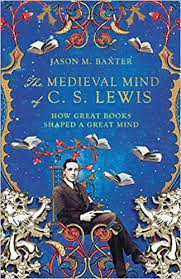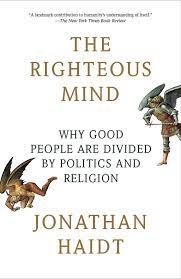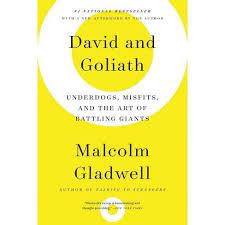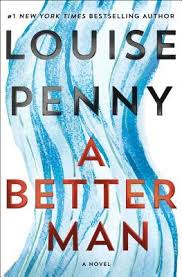Angie Kim has a great message. Unfortunately, she wrapped it in an unattractive package.
Because we are human, she reminds us, we tend to carry stereotypes with us about people who are disabled. Think—talking louder to someone in a wheelchair when clearly the issue isn’t being hard of hearing.
Kim’s novel Happiness Falls alerts us to one in particular—assuming that people with physical disabilities also have mental disabilities. We may find ourselves unnecessarily talking to them more slowly or with simpler vocabulary or maybe talking about them as if they are not in the room at all.

We all need these reminders. It’s too bad that Kim serves up this healthy nourishment in an unpalatable soup. How so? The first-person narrator of Kim’s story is an immature, self-absorbed, mentally scattered person who routinely destroys evidence and obstructs justice regarding a potential crime. It is hard to be sympathetic with someone like that, and it is just too annoying and tiresome to stay inside the mind of such a person for 400 pages.
The author would have been better off writing the book in third-person omniscient or writing each part of the book from the first-person perspective of a different character in the story—the mother, the brother, the detective, the therapist, the person who is disabled. I would guess that the editor suggested such a shift, a shift the author sadly rejected.

That’s probably why, not typical for a novel, we find a lot of explanatory footnotes in the book. It’s the only way the editor could convince the author to get at least some of the extraneous, highly detailed reflections out of the narrative. But it was not enough to salvage the book, I fear.
The lesson here for writers is: choose your rut carefully. Especially for longer pieces like books, the tone had better not be too intense—whether too sweet or too depressed, too hyper or too relaxed, too mysterious or too detailed. Otherwise readers may not appreciate the value of what you have to say.
If you want readers to stick with you, when it comes to tone, less is more.
—
Image by WikimediaImages from Pixabay

 Pilate knows just what these leaders are up to when they bring this innocent man to him for judgment, and it isn’t truth. No one wants truth. They just want power.
Pilate knows just what these leaders are up to when they bring this innocent man to him for judgment, and it isn’t truth. No one wants truth. They just want power.

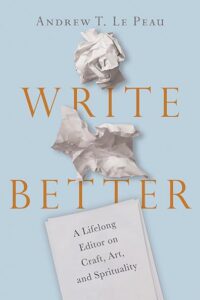
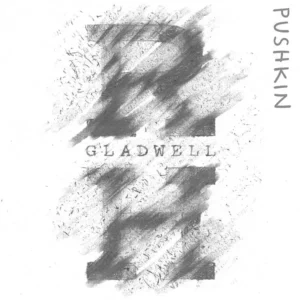 We could say something like, “But then I began to find evidence that contradicted my initial ideas.” Or, “I was stunned! Could I have been wrong about how beneficial intuition is?”
We could say something like, “But then I began to find evidence that contradicted my initial ideas.” Or, “I was stunned! Could I have been wrong about how beneficial intuition is?” In 1944 Charles Brady wrote a review of Lewis’s output up to that point, including the first installment of Lewis’s Space Trilogy,
In 1944 Charles Brady wrote a review of Lewis’s output up to that point, including the first installment of Lewis’s Space Trilogy,
 That can sound eerily like many people today who only associate with those who share their political viewpoints and who only consume “news” from outlets (right or left) that they agree with. They may be unwittingly cooperating with their own mental and emotional exploitation.
That can sound eerily like many people today who only associate with those who share their political viewpoints and who only consume “news” from outlets (right or left) that they agree with. They may be unwittingly cooperating with their own mental and emotional exploitation.  Another traumatic event came in fifth grade. The teacher had us all stand around the perimeter of the room for a spelling bee. Somehow I was confident I would be standing a long time. My first word was swimming, and I knew I’d nail it. Only I spelled it with just one m, and in disappointment and shame I was told to sit down. I was stunned. How could that not be the right spelling ? To this day, I still wonder if that extra m is really necessary. Would anyone seriously be tempted to pronounce swiming with a long i?
Another traumatic event came in fifth grade. The teacher had us all stand around the perimeter of the room for a spelling bee. Somehow I was confident I would be standing a long time. My first word was swimming, and I knew I’d nail it. Only I spelled it with just one m, and in disappointment and shame I was told to sit down. I was stunned. How could that not be the right spelling ? To this day, I still wonder if that extra m is really necessary. Would anyone seriously be tempted to pronounce swiming with a long i? Is there a virtue in being a good speller for its own sake? I’m not sure. Is there value in memorizing the number pi to a hundred digits? Certainly as mental exercise. Perhaps not much more.
Is there a virtue in being a good speller for its own sake? I’m not sure. Is there value in memorizing the number pi to a hundred digits? Certainly as mental exercise. Perhaps not much more.